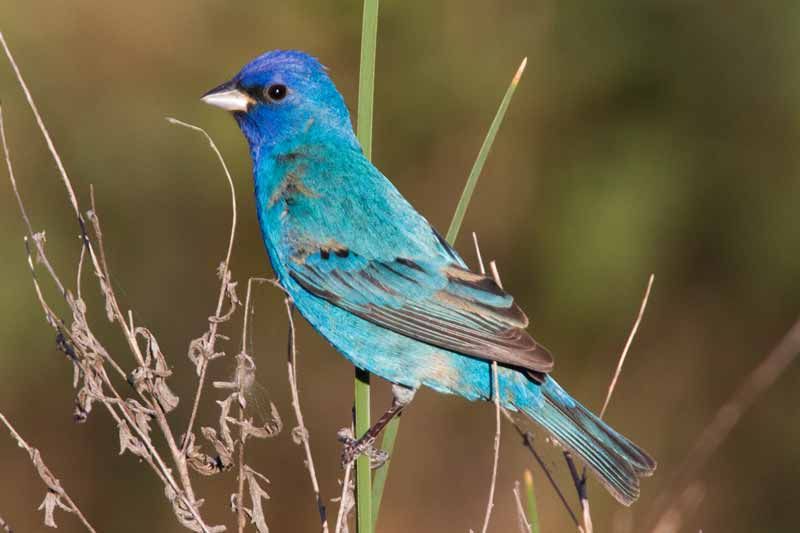Jun 04, 2014
by Steve Blight
Early one morning in May, I was woken up gradually by a familiar birdsong drifting through my open window. As I often do when I hear a bird that takes me a few minutes to register and identify, I ran through some of the possibilities. Warbler? Goldfinch? Grosbeak? Nope, nope and nope. Then I hit on it - it was an Indigo Bunting.
This year I am lucky to be stationed at our house near Sharbot Lake full time, so I am keeping track of the arrival dates of all our familiar summer birds, and May 20 was the arrival date for the Indigo Bunting. He has been one of the vigorous songsters serenading me awake every morning since.
Indigo Buntings are sparrow-sized songbirds that breed throughout the eastern half of North America wherever there is suitable edge habitat. In our area, Indigo Buntings choose areas where tall deciduous trees and shrubs are interspersed with grasses and other herbaceous vegetation. Hedgerows, roadsides, shrubby old fields and hydro rights of way are ideal spots to find Indigo Buntings.
Male Indigo Buntings are Ontario's only completely blue bird. Its head is a deep blue with its back and underparts more of a royal blue with a bit of black or brown streaking. Females are much duller, generally being a fairly uniform brown with the occasional hint of blue in her wing feathers. Indigo buntings eat seeds, berries, buds and a wide range of insects and spiders. Females do the nest building and all the incubation. Males only begin taking on parental duties once the young have fledged, when he takes over much of the feeding while the female prepares for a second brood.
Indigo Buntings have a special place in my heart. Long ago before I had become keenly interested in birds, my wife Anna (or more correctly my wife-to-be at the time) and I were enjoying a pleasant spring evening in her back yard in London, Ontario. At one point we both looked up and saw what appeared to be a small blue bird in the shrubs at the edge of the yard. Neither of us had any idea that all-blue birds like this could be seen in Ontario, and the hunt was on to figure out what it was. This led me to purchase my very first bird field guide, and after careful study, you guessed it, we came to the conclusion that the bird was an Indigo Bunting. And thus two birders and general nature enthusiasts were born and the world has been a much richer place for us ever since.
Fortunately, unlike many birds that winter in Mexico and Central America, Indigo Bunting populations seem to be holding their own. There has been some variation in abundance from place to place and over time, but overall numbers in Ontario seem to be steady or even increasing slightly. I am optimistic that I will be woken up on late May mornings by this enthusiastic singer for many years to come. At least he waits until dawn -- decidedly unlike the Eastern Whip-poor-will that has taken up residence around our house and who sings all night!
More Stories
- No Winner Yet in Catch The Ace But Fundraising Target Met
- South Frontenac Food Bank Opens Second Location in Battersea
- Sharbot Lake Pentecostal Church Anniversary - 1925-2025
- Frontenac Holistic Health Fair - September 20 At Storrington Centre
- Odd Year For Real Estate - But Sales Are Steady Year Over Year
- 193rd Kingston Fall Fair
- Kim Phuc - the Napalm Girl - To Visit Flinton In November
- South Frontenac Council - September 2
- Sticker Shock - EV Charging Station To Cost North Frontenac Township
- 30th Anniversary Verona Car Show

